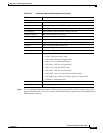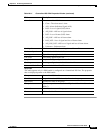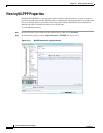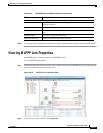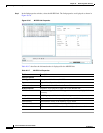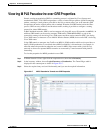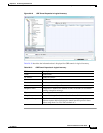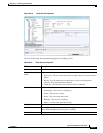
20-31
Cisco Prime Network 4.0 User Guide
OL-29343-01
Chapter 20 Monitoring MToP Services
Viewing MPLS Pseudowire over GRE Properties
Viewing MPLS Pseudowire over GRE Properties
Generic routing encapsulation (GRE) is a tunneling protocol, originated by Cisco Systems and
standardized in RFC 2784. GRE encapsulates a variety of network layer packets inside IP tunneling
packets, creating a virtual point-to-point link to devices at remote points over an IP network. GRE
encapsulates the entire original packet with a standard IP header and GRE header before the IPsec
process. GRE can carry multicast and broadcast traffic, making it possible to configure a routing
protocol for virtual GRE tunnels.
In RAN backhaul networks, GRE is used to transport cell site traffic across IP networks (nonMPLS). In
addition, GRE tunnels can be used to transport TDM traffic (TDMoMPLSoGRE) as part of the
connectivity among cell site-facing Cisco 7600 routers and base station controller (BSC) site-facing
Cisco 7600 routers, or between a Cisco Mobile Wireless Router (MWR) device and a BSC site-facing
Cisco 7600 router.
Using GRE tunnels to transport Any Traffic over MPLS (AToM) enables mobile service providers to
deploy AToM pseudowires in a network where MPLS availability is discontinuous; for example, in
networks where the pseudowire endpoints are located in MPLS edge routers with a plain IP core
network, or where two separate MPLS networks are connected by a transit network with plain IP
forwarding.
To view the properties for MPLS pseudowire over GRE:
Step 1 In Prime Network Vision, right-click the required device, then choose Inventory.
Step 2 In the inventory window, choose Logical Inventory > Pseudowires. The Tunnel Edges table is
displayed in the content pane as shown in Figure 20-17.
Step 3 Select the required entry and scroll horizontally until you see the required information.
Figure 20-17 MPLS Pseudowire Tunnels over GRE Properties



